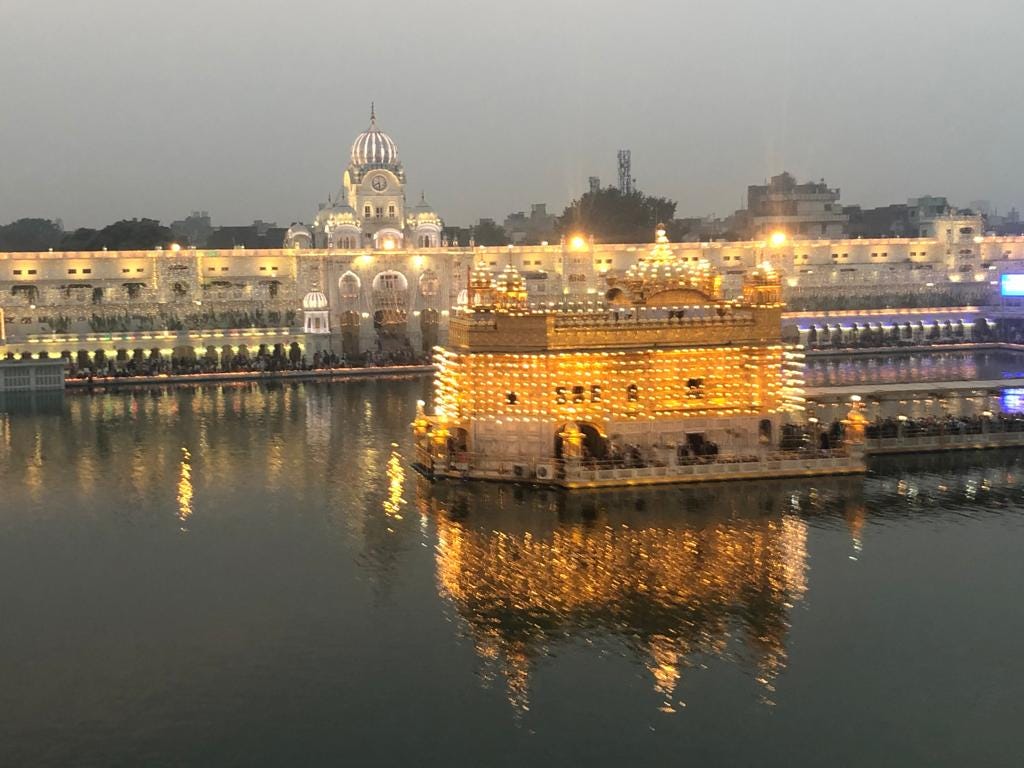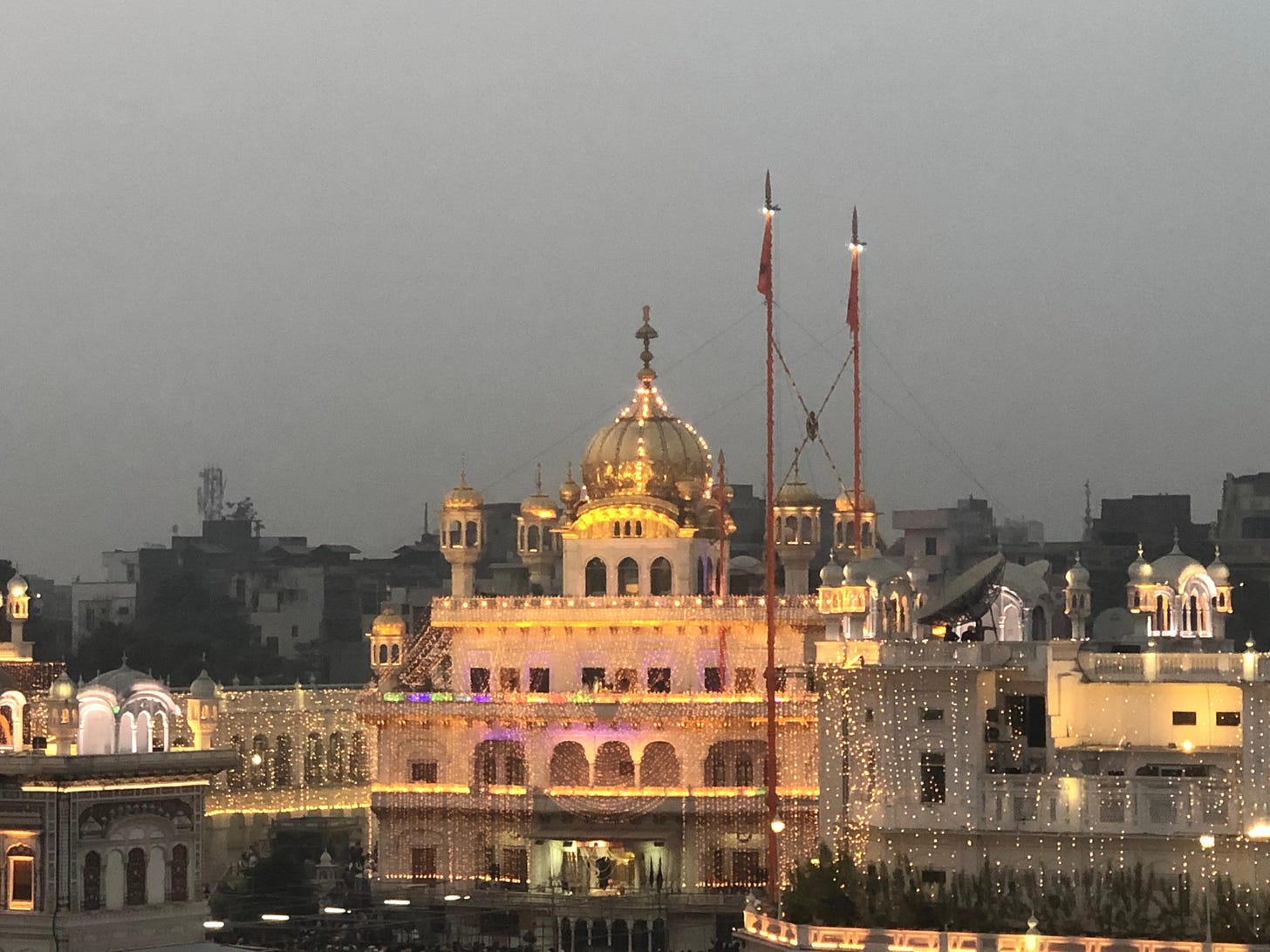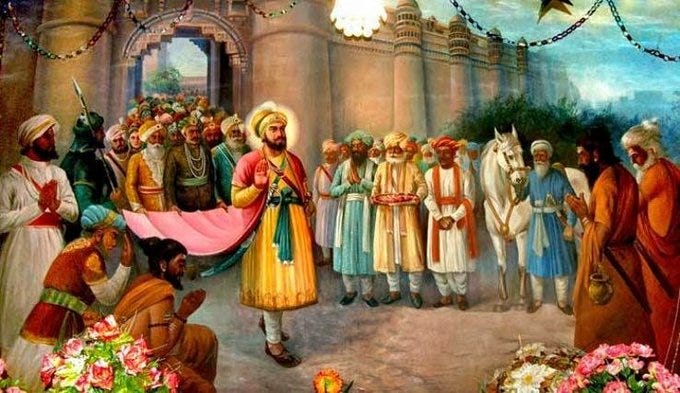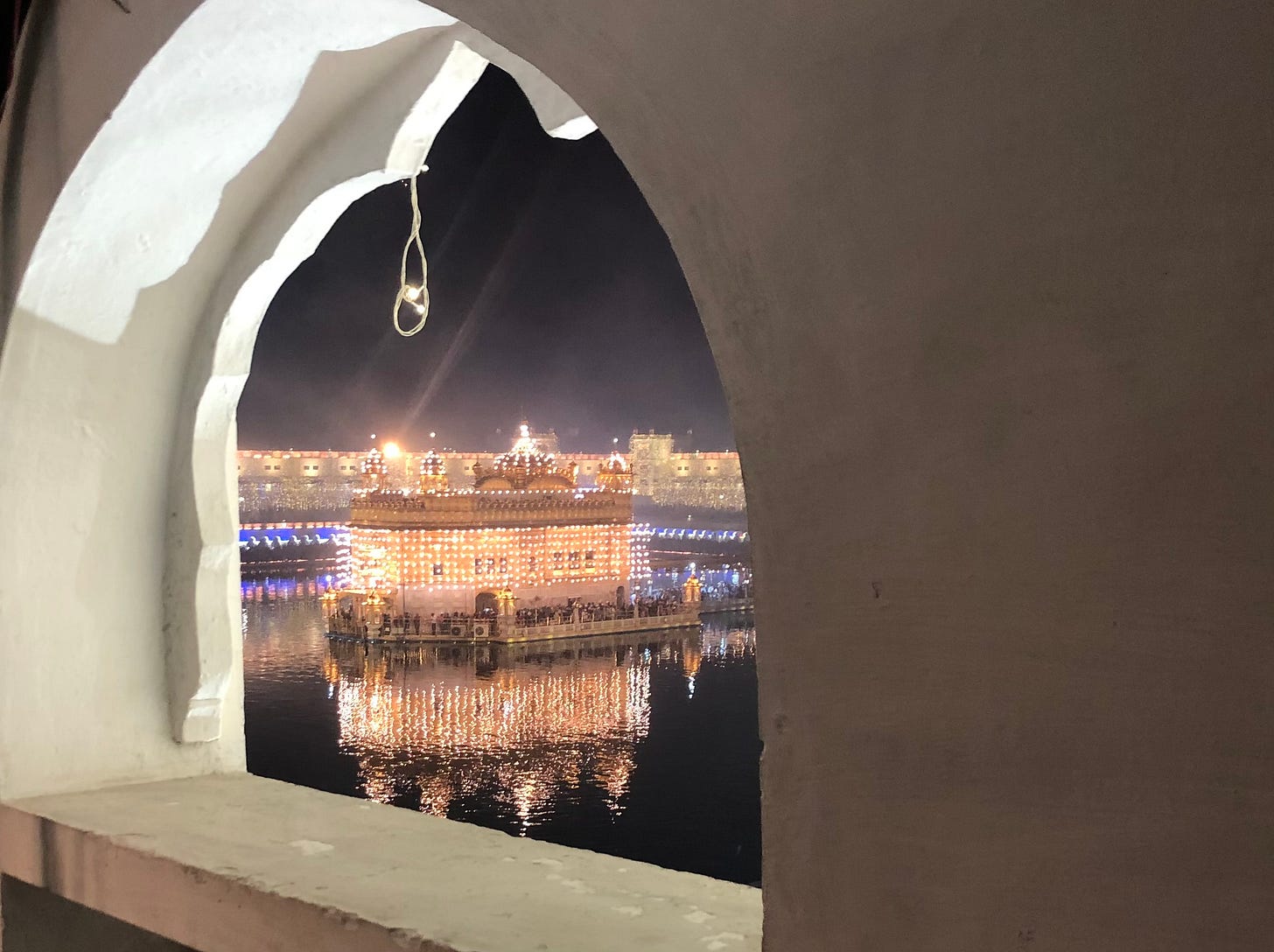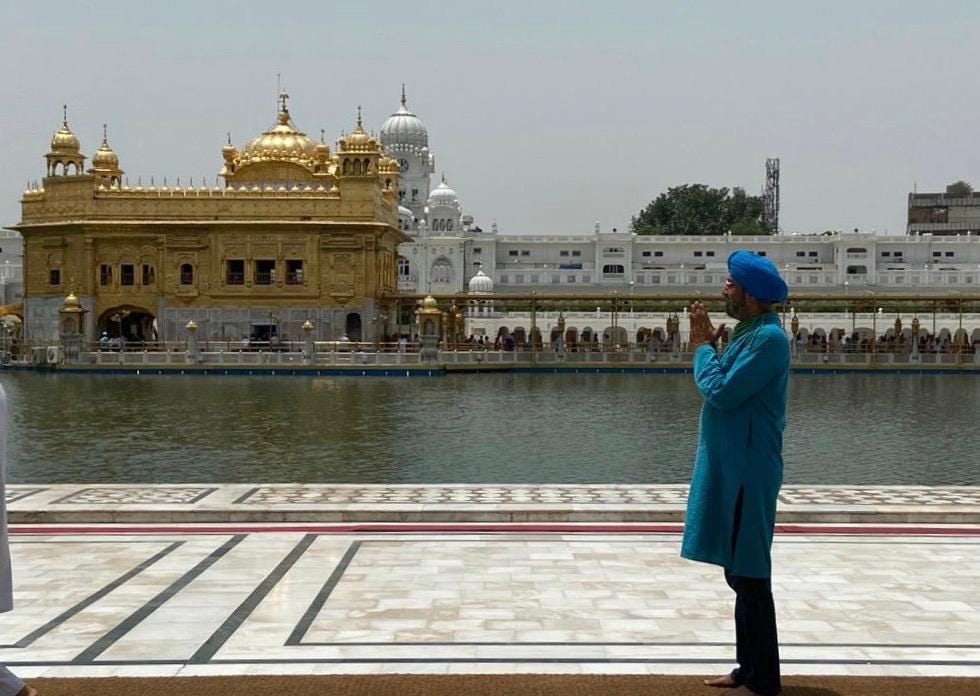Miri-Piri Concept of Guru Hargobind Ji: A Point of Inflexion in the Evolution of Sikhism
Point of Inflexion in Sikhism
The life and times of Guru Hargobind Sahib, the sixth Nanak, embody a transformative period in Sikh history, marked by the introduction of the concept of Miri-Piri, signifying the harmonious integration of temporal authority and spiritual supremacy. His ascension to Guruship, following the divine legacy of his predecessors, heralds a new era that would redefine the trajectory of Sikhism.
Birth and Early Life
Guru Hargobind Sahib was born on June 19, 1595, in the village of Guru Ki Wadali, in the Amritsar district of Punjab, India, to Guru Arjan Dev Ji, the fifth Sikh Guru, and Mata Ganga Ji. His early life was steeped in the teachings of Sikhism, with a particular emphasis on the spiritual education imparted by his father. However, the socio-political climate of the time, marked by Mughal oppression, necessitated a novel approach to leadership within the Sikh community.
Ascension to Guruship
In 1606, after the martyrdom of Guru Arjan Dev Ji at the hands of the Mughal Emperor Jahangir, Guru Hargobind Sahib ascended to Guruship at the tender age of 11. He symbolically donned two swords, one named Piri (spirituality) and the other Miri (temporal power), thus establishing the doctrine of Miri-Piri. This pivotal act signified the inseparable bond between the spiritual and the temporal realms, advocating for a life where spiritual pursuits and worldly responsibilities coexist.
The Concept of Miri-Piri and the Two Nishan Sahib Pennants
The concept of Miri-Piri was tangibly symbolized by the installation of two Nishan Sahib flags in front of the Akal Takht, the temporal command centre established by Guru Hargobind Sahib, and set against the backdrop of the Harmandir Sahib (Golden Temple), the spiritual heartland. The flag denoting Piri (spirituality) is traditionally positioned a foot and a half higher than that of Miri (temporal authority), illustrating the supremacy of spiritual governance over temporal rule. The Nishan Sahib facing the Akal Takht Sahib is made one foot shorter than its counterpart, which faces the Darbar Sahib. This visual distinction emphasized the Guru’s doctrine that, although temporal authority is essential for the safeguarding and flourishing of society, the quest for spiritual enlightenment should be the paramount goal of human existence.
Akal Takht and Relations with Mughal Authority
The Akal Takht, established by Guru Hargobind Sahib, served as the seat of Sikh temporal authority, a place from where the Guru could address and lead the community in worldly affairs. It was from here that he organised the community to withstand the challenges posed by the Mughal empire and other adversaries. His relationship with Emperor Jahangir was complex, marked by initial hostility, resulting in the Guru's detention in Gwalior Fort. However, over time, there was a reconciliation of sorts, leading to his release, which is commemorated as Bandi Chhor Divas, coinciding with Diwali.
The Release from Gwalior and Bandi Chhor Divas
The release of Guru Hargobind Sahib from Gwalior, together with 52 Hindu kings whom he demanded be freed with him, is commemorated as Bandi Chhor Divas. This occasion reflects the Guru's dedication to justice and liberation, reaching out beyond the Sikh community to all the oppressed. The Golden Temple Complex in Amritsar is bathed in lights and spectacular fireworks on this event, which coincides with Diwali, adding to the festivities and the spirit of freedom and joy.
His Passing and Eternal Legacy
Guru Hargobind Sahib's passing in 1644 signified the transition from one epoch to another, with the Guruship being passed on to his grandson, Guru Har Rai. His legacy, nevertheless, continues to be immortalized within the Sikh tradition, not just through the physical institutions such as the Akal Takhat which he founded. While Guru Hargobind, the sixth Sikh Guru, did compose verses, these are not included in the Guru Granth Sahib. The Guru Granth Sahib, initially compiled as the Adi Granth by his father, the fifth Sikh Guru, Guru Arjan Dev Ji, contained the hymns of the first five Sikh Gurus (Guru Nanak, Guru Angad, Guru Amar Das, Guru Ram Das, Guru Arjan).
Later, when the tenth Sikh Guru, Guru Gobind Singh Ji, meticulously reconstructed what is now venerated as the eternal manifestation of the living Guru of the Sikhs, the Sri Guru Granth Sahib, while at Damdama Sahib (Talwandi Sabo) – after the original manuscripts had been lost in the floodwaters of the Sirsa river during the perilous journey from Anandpur Sahib to Chamkaur Sahib – he included only the invaluable verses penned by his father, the ninth Guru, Guru Tegh Bahadur Ji (Salok Mahala 9). He decided against incorporating his own hymns or those by any of the subsequent Gurus after Guru Arjan Dev Ji. Consequently, Guru Hargobind’s compositions are not included in the Guru Granth Sahib, but they may be found in other Sikh scriptures or texts.
Summing Up
Guru Hargobind Sahib's life and teachings embody the resilience and adaptability of the Sikh faith amidst challenges. His founding of the Miri-Piri doctrine, the establishment of the Akal Takht, and his steadfast dedication to the well-being of all beings, regardless of their faith, cast a profound influence that continues to inspire. The Guru's legacy shines as a guiding light, illuminating the path to a life where spiritual fulfillment and worldly responsibilities are not just balanced but are seen as interdependent forces driving the ultimate purpose of human life. Since his ascension to Guruship coincides with the unparalleled martyrdom anniversary of his father and the fifth Guru, it is typically not marked with great celebration. Nevertheless, we consider it vital to reflect on his contributions and impact today, marking the anniversary of the ascension of his grandson, the seventh Sikh Guru, Guru Har Rai Ji, to Guruship.


